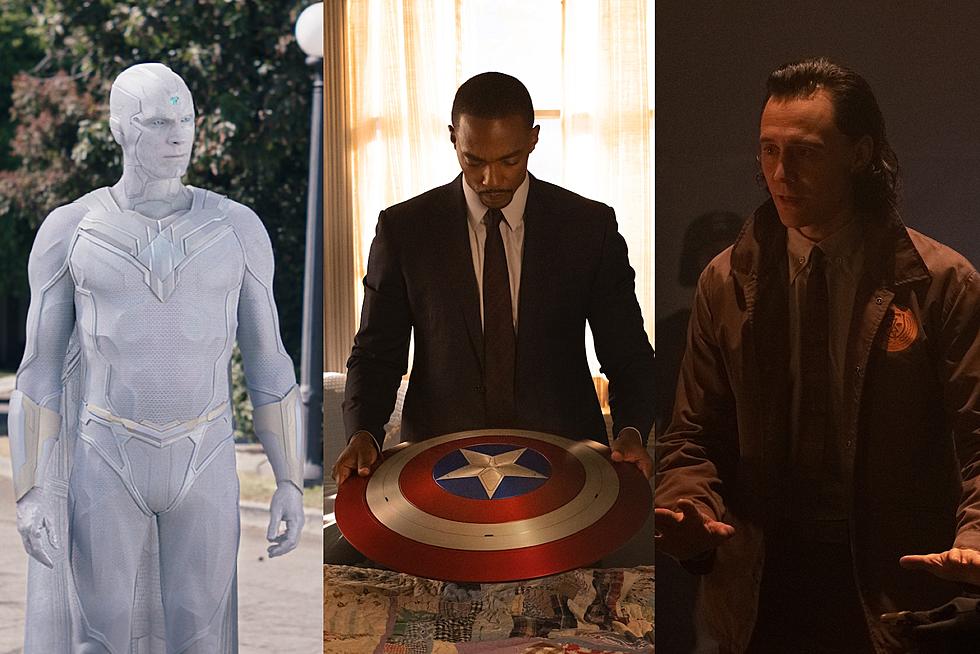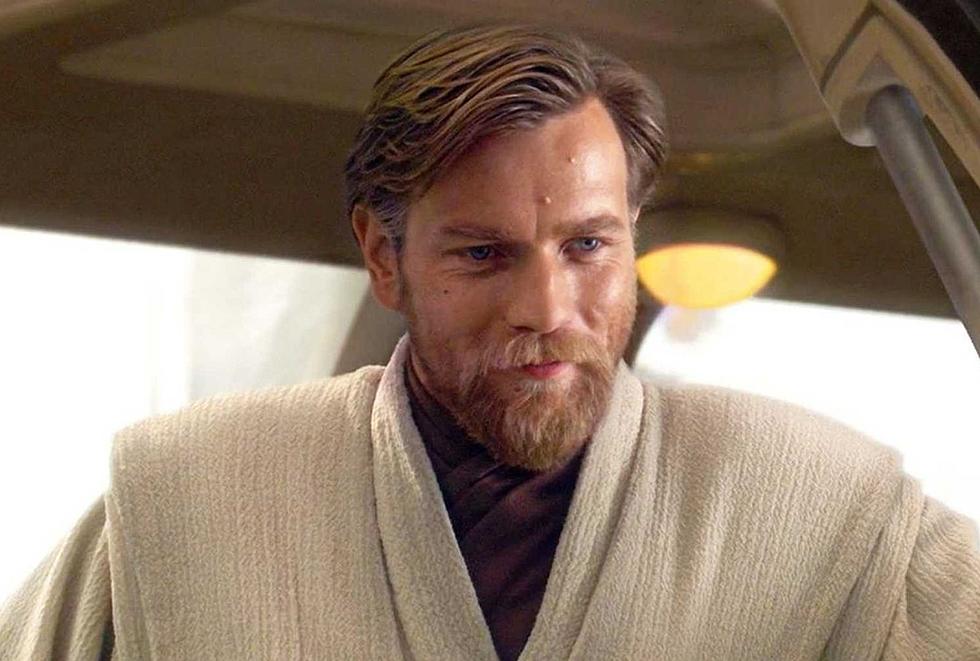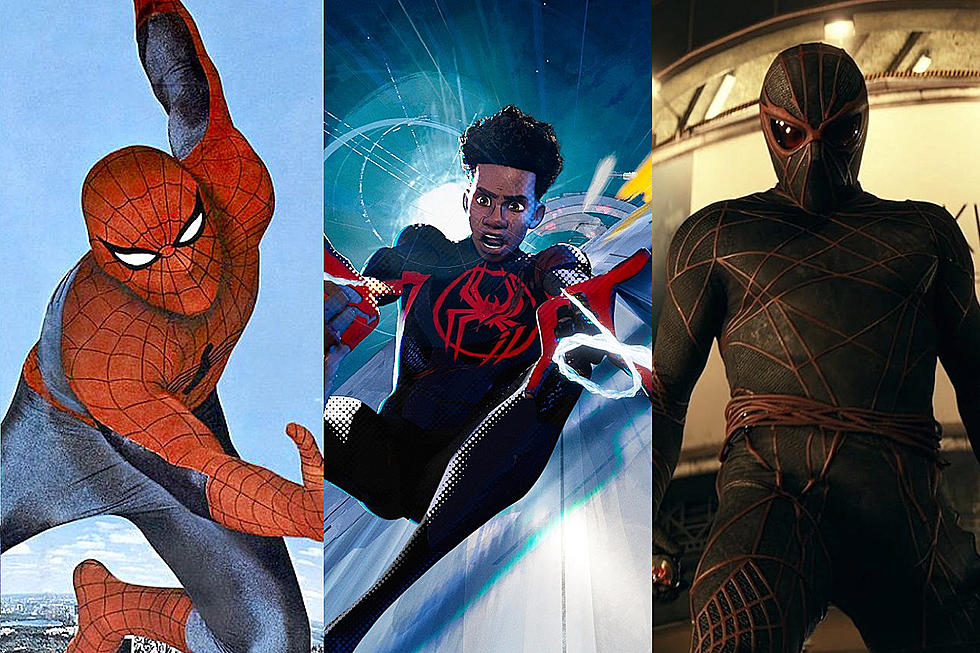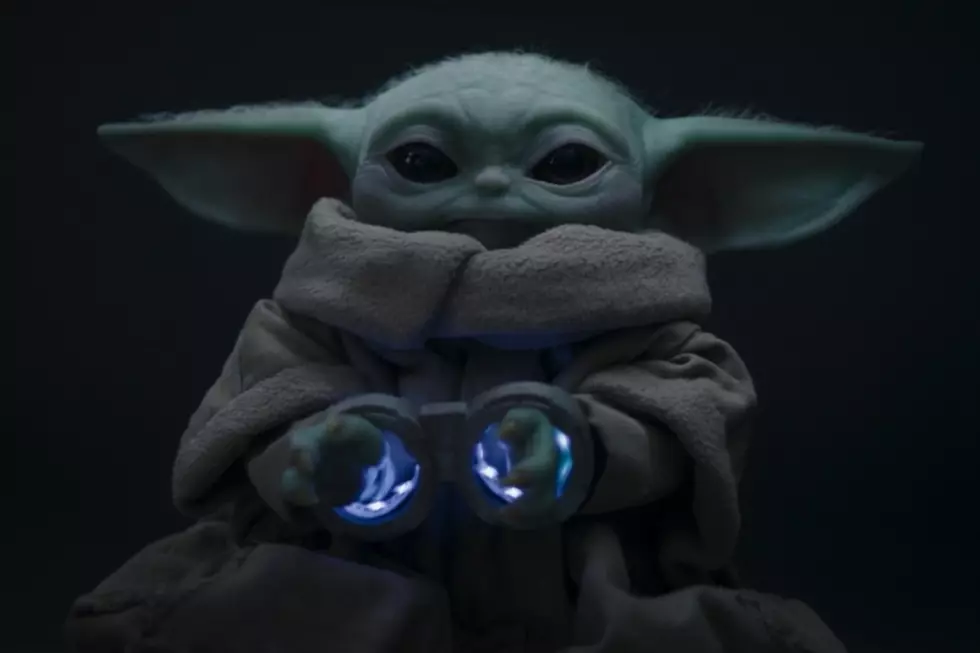
Every Marvel Disney+ Show So Far Is About the Exact Same Thing
The follow post contains SPOILERS for Episode 2 of Loki, plus all the other Marvel Disney+ shows so far. If you think Chris Evans is still the MCU’s Captain America, you’re in deep trouble.
The second episode of Loki ends with a big cliffhanger. The time-traveling villain that Loki and the Time Variance Authority have been hunting is not just another “variant” of Loki, it’s a female variant of Loki. This new Lady Loki (she prefers the name Randy) fights the more familiar Loki (Tom Hiddleston) and vanishes into the timestream, leaving her motives for murdering TVA agents unclear for the moment. But no matter her reason for causing mischief in Marvel’s “sacred timeline,” she’s already given Loki a reason to exist: Exploring the same theme as the other Marvel Disney+ shows to date, heroes struggling to redefine their identity.
That idea initially appeared in WandaVision, a series that redefined its identity in almost every single episode. Months before Loki officially added the concept of the multiverse to the Marvel Cinematic Universe, WandaVision took place in a multiverse of different sitcoms. The premiere borrowed the style of ’50s sitcoms like The Dick Van Dyke Show; the next aped the aesthetic of Bewitched; the third installment felt like it could have aired in the time slot after The Brady Bunch. Its two title character served as heroes in the Avengers. Now they live inside these classic TV shows while members of the government organization S.W.O.R.D. investigate strange disturbances around the town of Westview, New Jersey.
By the end of WandaVision, both Wanda (Elizabeth Olsen) and Vision (Paul Bettany) have undergone complete makeovers, both physically and emotionally. Wanda begins the season grieving the death of Vision, and invents WandaVision’s fictional reality as a means of comforting herself. In the series finale, Wanda embraces her new role as the “Scarlet Witch” of the Marvel Cinematic Universe, wielder of “chaos magic” and owner of the Darkhold, a powerful book of spells.
The Vision that appears with Wanda in WandaVision’s initial episodes is, essentially, a ghost; Wanda’s artificial recreation of an artificial being. Over the course of the series, it’s revealed that Vision’s original body lies dormant and fragmented in a S.W.O.R.D. facility. This Vision eventually gets rebuilt and reactivated — without the old Vision’s memories. An encounter with Wanda’s Vision restores this all-white Vision’s original programming and humanity, creating a being that is essentially a synthetic synthesis of multiple Visions in a single body.
This notion of characters reinventing themselves inwardly and outwardly extends to most of WandaVision’s supporting cast, with many characters undergoing similar transformations, or at least playing multiple versions of the same character. S.W.O.R.D. agent Monica Rambeau (Teyonah Parris) gains super powers; Wanda’s neighbor Agnes turns out to be the ancient witch Agatha Harkness. Even Wanda’s dead brother Pietro returns in a new form, impersonated by another mind-controlled Westview resident (Evan Peters) who just happens to look like the Wanda’s late sibling.
The same sorts of constant metamorphoses occur frequently in the next Marvel Disney+ series, The Falcon and the Winter Soldier. Once again, both title characters undergo a significant change of identity over the course of the season — to the point where the final episode actually features a change in title as well, to Captain America and the Winter Soldier. In Sam Wilson’s case, he has an additional identity to reckon with; that of a Black man who must decide whether he can — or even wants — to become the personification of American values. In the scene below, Isaiah Bradley (Carl Lumbly), a former Super Soldier who received his powers as part of a dangerous experiment and then spent decades in prison for the “crime” of serving his country, confronts Sam (Anthony Mackie) about the danger of picking up Steve Rogers’ shield. “They will never let a black man be Captain America,” he says. “And even if they did, no self-respecting Black man would ever want to be.”
Haunted by his crimes, Sam’s partner Bucky (Sebastian Stan) finds himself similarly torn between his past and his future, and between how he wants to be perceived and how the people around him actually see him. He goes by two different names on the series; to most, he’s still “The Winter Soldier,” Hydra’s former assassin. To the Wakandans, he’s “The White Wolf,” the title he was given while recovering from injuries following the events of Captain America: Civil War.
The multiple identities don’t end there. There’s also John Walker, who becomes the government’s choice to assume the role of Captain America when Falcon initially turns down the job. After a mission goes wrong, Walker gets stripped of the title and takes on another monicker: U.S. Agent. Plus the mysterious criminal mastermind behind a new generation of Super Soldiers known as the Power Broker turns out to be Sharon Carter (Emily VanCamp), formerly an ally of Captain America and an agent of S.H.I.E.L.D. Feeling betrayed by her country after Civil War, she turned to a life of crime.
The flimsy divide between good and evil has very much continued into the early episodes of Loki, where Hiddleston’s God of Mischief has been tasked with capturing a variant of himself on behalf of the Time Variance Authority, an organization that preserves the “proper” flow of time in Marvel’s cinematic universe. This Loki presents himself as a stereotypical super-villain: Arrogant, remorseless, and obsessed with power. But after the TVA shows him what’s supposed to happen to him in the years after he escaped from his timeline, he has a change of heart. “I don’t enjoy hurting people,” he admits. “I don’t enjoy it. I do it because I have to ... because it’s part of the illusion. It’s the cruel, elaborate trick conjured by the weak to inspire fear.” Before the Lady Loki shows up at the end of Episode 2, Loki himself has already introduced the idea that his whole identity is both false and highly adaptable.
Lady Loki’s identity is even more fluid; she has the ability to project her consciousness into any body she touches. (Like poor Randy from the Roxxcart store.) These endlessly variable Lokis mesh perfectly with Loki’s concept of a multiverse, in which limitless variations of popular characters (like a female Loki) are possible.
The notion of two different Lokis at war mirrors the confrontation in WandaVision between Wanda’s Vision and the new white Vision rebuilt from his original parts. As the two androids fight, they debate the Ship of Theseus, a famous thought experiment about an ancient ship that slowly gets its rotting wood replaced with new boards. When none of the original wood remains, is it still the Ship of Theseus? Or to put it another way: Is the new Vision still the Vision? (Or, to put it a third way: What is the white Vision but a “variant” of the original?)
There’s a parallel with Marvel itself here as well. It just concluded its wildly ambitious “Infinity Saga” that stretched across 23 films and firmly established its cinematic universe. These Disney+ shows mark the studio’s first venture into television after previously dedicating all of its creative efforts to movies. (Earlier Marvel television shows were handled by a separate division in the company.) At the same time, some of Marvel’s earliest and biggest stars, like Chris Evans and Robert Downey Jr., have begun to retire from the MCU. New actors are being called upon to assume their roles — like Anthony Mackie as the new Captain America, or Dominique Thorne as Riri Williams, a young woman who creates her own suit of armor in the upcoming Ironheart series.
In other words, Marvel is essentially undergoing its own large-scale Ship of Theseus experiment. If the Marvel Cinematic Universe replaces its actors with new ones, and puts half of them on television instead of movies, is it still the Marvel Cinematic Universe? The inherent uncertainty around these questions is baked into all of their Disney+ series, where characters evolve and change over and over again.
This concept isn’t going away anytime soon, either. Marvel’s next Disney+ show is What If...? an animated series exploring alternative versions of famous Marvel stories. The series will include a Peggy Carter who becomes Captain America and a Black Panther who transforms into Star-Lord. In Phase Four of the Marvel Cinematic Universe, identities aren’t secret, they’re infinitely malleable.
Every Marvel Movie Ever Made, Ranked From Worst to First
More From KIXS FM 108










